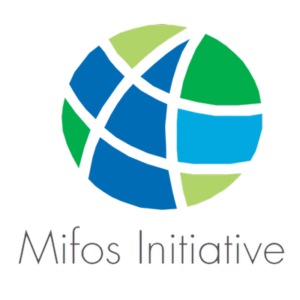Documenting Technology Impact: Mifos ROI Model and Case Studies
Report examining the technology return on investment (ROI) realized by deploying Mifos® including a hands-on ROI tool and three in-depth case studies documenting technology ROI at four MFIs.
Technology is critical in building strong organizations that can respond nimbly to changes. It is especially important in the microfinance industry, which has grown rapidly over the past decade to serve more than 190 million people globally. This series, undertaken through a partnership between The MasterCard Foundation and Grameen Foundation, examines the cost benefits realized by deploying Mifos® at four microfinance institutions and is a step in advancing knowledge about deploying a management information system at microfinance institutions using diverse operating models.
The report provides an actionable ROI model which any MFI can use to measure the financial benefits of their technology investment in Mifos along with three case studies in which the ROI framework was fully carried out to document the value generated by Mifos technology investment.
Each document can be viewed individually or you can access the entire series of case studies in one download (.zip).
Overview of ROI Framework and Generic ROI Model
Implementing a technology system is a major investment requiring the long-term commitment of funds,  staffing, training, and support. With limited resources, MFI management must make a careful and calculated decision when investing in technology. ROI Modeling provides an accurate tool to estimate the benefit one will get from a project investment. By quantitatively measuring the benefits of technology, an MFI can make the a prioritized decision and appropriate level of investment in technology. While ROI measurement is not an exact science this model provides a mathematical model to compare the benefits and costs of investing in Mifos.
staffing, training, and support. With limited resources, MFI management must make a careful and calculated decision when investing in technology. ROI Modeling provides an accurate tool to estimate the benefit one will get from a project investment. By quantitatively measuring the benefits of technology, an MFI can make the a prioritized decision and appropriate level of investment in technology. While ROI measurement is not an exact science this model provides a mathematical model to compare the benefits and costs of investing in Mifos.
Measuring ROI helps the MFI to focus on results and really understand the value that technology provides. We’ve built this model as a hands-on Excel-based tool that MFIs can use to evaluate investing in Mifos. By going through the process of calculating ROI, management will understand their business better and how technology investment can potentially advance their business and social goals. It’s an easy-to-use tool to identify the critical areas where efficiencies can be achieved leading to revenue gains and cost savings. The ROI model is dynamic in nature in that the MFI should continually monitor and adjust its projections to reflect the current situation as new quantifiable benefits arise.
Download the ROI Framework (.pdf) and ROI Model (.xlsx).
Case Study at Grameen Koota and enda inter-arabe
 Grameen Koota (GK) and enda inter-arabe (enda) are two of the first and largest Mifos customers, serving 450,000 and 135,000 clients respectively. They have very different operational models and had vastly differing business objectives for investing in Mifos. This case study shows that despite the difference in operational context and business objective, they were both able to achieve their overarching goals. Grameen Koota used Mifos to pursue an aggressive growth strategy that turned efficiency gains from its group lending methodology into an ROI of $5 million USD. On the other hand, enda utilized Mifos to deepen its customer relationship and better serve their customers through an individual lending model but only generated an ROI of $1.3 million USD.
Grameen Koota (GK) and enda inter-arabe (enda) are two of the first and largest Mifos customers, serving 450,000 and 135,000 clients respectively. They have very different operational models and had vastly differing business objectives for investing in Mifos. This case study shows that despite the difference in operational context and business objective, they were both able to achieve their overarching goals. Grameen Koota used Mifos to pursue an aggressive growth strategy that turned efficiency gains from its group lending methodology into an ROI of $5 million USD. On the other hand, enda utilized Mifos to deepen its customer relationship and better serve their customers through an individual lending model but only generated an ROI of $1.3 million USD.
Since this was the first case study conducted, we learned valuable lessons and were able to refine and optimize the model for future case studies. These lessons have been applied to the continued development of the Mifos platform and the completion of this ROI model.
Download the Grameen Koota and enda case study (.pdf).
Case Study at Al Majmoua
Al Majmoua is a unique player in the Lebanese microfinance sector; they rose to their leadership position in the market by being fully independent and politically neutral with a holistic approach attending to both the social and economic needs of its clients. Unable to meet their forecasted plans for growth with their in-house Access-based MIS, Al Majmoua became a member of the Mifos consortium program to implement Mifos on-site and develop a long term IT strategy with the assistance of Grameen Foundation’s expert business and technology consultants. The expected ROI yield for Al Majmoua over five years will be $840,000 USD. Al Majmoua operates primarily through an individual lending model with payments collected through bank networks so unlike Grameen Koota, they are not benefiting from massive loan officer efficiency gains. Rather, Al Majmoua is benefiting from Mifos through greater potential to scale than their previous MIS with the capability to launch new products and services to help them maintain their market leadership in innovation.
Download the Al Majmoua case study (.pdf).
Case Study at KEEF
 KEEF is a young, rapidly growing MFI promoting women and youth empowerment through microcredit in Kenya. This case study explored the value behind not only the implementation of Mifos but also the investment in a mobile money platform through M-PESA integration with the Mifos platform. KEEF underwent several phases in their technology implementation – moving from a paper-based record system to initial automation through Mifos. As part of the Mifos consortium they refined their business processes and optimized their Mifos configuration before ultimately moving to a hosted instance of Mifos Cloud and fully rolling out their mobile money integration with M-PESA.
KEEF is a young, rapidly growing MFI promoting women and youth empowerment through microcredit in Kenya. This case study explored the value behind not only the implementation of Mifos but also the investment in a mobile money platform through M-PESA integration with the Mifos platform. KEEF underwent several phases in their technology implementation – moving from a paper-based record system to initial automation through Mifos. As part of the Mifos consortium they refined their business processes and optimized their Mifos configuration before ultimately moving to a hosted instance of Mifos Cloud and fully rolling out their mobile money integration with M-PESA.
The fourth and final phase of their implementation is still underway so this case study doesn’t have a calculated financial ROI. Nevertheless, this analysis helped us draw important lessons demonstrating the basic truth that a successful technology project must unify people, processes, and technology. To fully realize the strategic, financial, and social benefits of technology, KEEF first had to solidify its fundamental business operations. Only then could they leverage the value that automation through a centralized technology solution like Mifos could provide. Likewise, once KEEF had stable business processes and strong competence across its MIS, they could begin to reap the value of innovations like mobile money.
Download the KEEF case study (.pdf).





Leave a Reply
Want to join the discussion?Feel free to contribute!